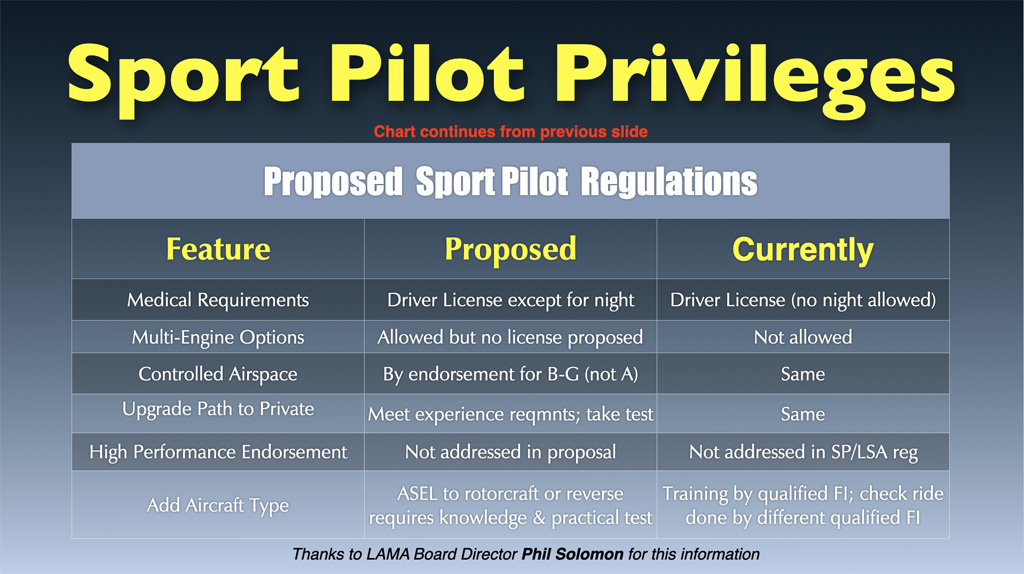 Editor’s Note: Recent commentary on the future of Rotax engines brought out a few comments that high-spec versions of the 900-series engines already exist, just in the aftermarket. For a deeper dive into the topic, here’s a story that ran in early 2023 in KITPLANES from Eric Stewart, a regular contributor to that magazine. Prices for Edge’s modified engines run from 26,000 Euro for the 108-hp EP912i to 45,000 Euro for the 180-hp EP917Ti.
Edge Performance of Notodden, Norway, has been around for little more than a decade, but their EFI and Rotax upgrades have quickly become popular, setting a high bar with race-quality components. I’ll be putting the EP912sti in the SR-1 race plane—not only does it have exceptional power to weight (important given the 661-pound weight limit for the SR-1’s record category), but racers go best when it’s hot and high—and the EP912STi’s turbo ensures we can still make power in those conditions.
Editor’s Note: Recent commentary on the future of Rotax engines brought out a few comments that high-spec versions of the 900-series engines already exist, just in the aftermarket. For a deeper dive into the topic, here’s a story that ran in early 2023 in KITPLANES from Eric Stewart, a regular contributor to that magazine. Prices for Edge’s modified engines run from 26,000 Euro for the 108-hp EP912i to 45,000 Euro for the 180-hp EP917Ti.
Edge Performance of Notodden, Norway, has been around for little more than a decade, but their EFI and Rotax upgrades have quickly become popular, setting a high bar with race-quality components. I’ll be putting the EP912sti in the SR-1 race plane—not only does it have exceptional power to weight (important given the 661-pound weight limit for the SR-1’s record category), but racers go best when it’s hot and high—and the EP912STi’s turbo ensures we can still make power in those conditions.Hot-Rodded Rotaxes? That’s What Edge Performance Is All About
Editor’s Note: Recent commentary on the future of Rotax engines brought out a few comments that high-spec versions of the 900-series engines already exist, just in the aftermarket. For a deeper dive into the topic, here’s a story that ran in early 2023 in KITPLANES from Eric Stewart, a regular contributor to that magazine. Prices for Edge’s modified engines run from 26,000 Euro for the 108-hp EP912i to 45,000 Euro for the 180-hp EP917Ti.
Edge Performance of Notodden, Norway, has been around for little more than a decade, but their EFI and Rotax upgrades have quickly become popular, setting a high bar with race-quality components. I’ll be putting the EP912sti in the SR-1 race plane—not only does it have exceptional power to weight (important given the 661-pound weight limit for the SR-1’s record category), but racers go best when it’s hot and high—and the EP912STi’s turbo ensures we can still make power in those conditions. Wanting to know more about the engine I was buying, I recently traveled to Notodden (a 90-minute drive west of Oslo) to learn more about the company’s background and processes.

Thomas Hauklien installs a cylinder head on a Rotax 900-series engine.
Edge CEO and founder Thomas Hauklien has a long history with both Experimental aircraft and engine modification. He’s been an engineer for 15 years, having graduated with an electro-mechanical degree. His first plane was a RANS S-5 with a Rotax 503 two-stroke that he flew for about a year and a half. “I got to overhaul that engine. It seized up on me like most two-strokes.” This was followed by a Kitfox Model 4 he restored and flew for a couple of years with a Jabiru 2200 that he’d converted to a turbo. “That was kind of stretching it at the time, no one had ever done anything like that.”
This was followed by a Sonex with an AeroVee that Hauklien bought from the U.S., followed by another Sonex that he built himself. “Coming from a racing background, it bothered me that the engine produced too little power. So the first thing I did was get bigger-bore cylinders, bigger pistons, ported the heads and did regular tuning stuff to get a bit more horsepower.” This was followed by fuel injection and, finally, a turbo.
Appreciating that he’d pushed the Volkswagen-based engine too far—making a claimed 120–140 hp—Hauklien’s next step was to acquire an at-TBO Rotax 912. “Doing a full turbo and fuel injection for that one as well was only natural,” he says. Friends who were struggling with notoriously finicky Rotax carbs started to ask Hauklien to retrofit their engines as well, and from there word spread. In 2010 Edge attended AERO Friedrichshafen (think of it as Europe’s version of Oshkosh), “and that is when it really started to kick off,” says Hauklien.

Hauklien welding the crank for an EP912STi conversion
“We got a lot of exposure [at Friedrichshafen]. At the time neither Rotax nor any of the other major brands were offering fuel-injected engines, so understandably enough there was a lot of skepticism among pilots. My argument was always if you go to the auto dealer today and buy a new car, would you have it fuel injected or would you want carbs that you have to maintain? The answer is simple. The next obvious question is how often does your car break down on the highway because the fuel injection system fails? It’s next to none. A lot of people approached us and said the Rotax has redundant dual ignition, and it has dual redundant fueling because it has two carburetors. Well clearly that isn’t the case. Basically you end up with double the risk of getting a carburetor failure and engine out because you have two carburetors, which both need to function perfectly in order to have an operating engine. If you lose one injector, it will still run on three cylinders. It will vibrate but you will maintain altitude. But if you lose one carburetor you lose one cylinder bank,” or half the engine, he says. Plus, injection eliminates the possibility of carb icing.
A Menu of Mods

“We have our own optimized intake and induction system that has been flow optimized, trying different runner diameters and lengths,” says Hauklien. “Inside the plenum the velocity stacks use a trumpet mouth to accelerate the airflow and keep it laminar, all of which has been meticulously tested on the dyno. But it’s always a compromise with tuning, regardless if it’s header or intake tuning. So rather than just focusing on making peak power, which is easy, we’ve always tried to focus on the rpm range where the engine typically operates. This is also really evident in dyno testing: We took a stock 100-hp carbureted 912 and it made 100.2 hp on our dyno. We then bolted on our intake and EFI system and it made almost 109 hp. With carburetors you have the venturi, so you get a pressure drop. But running EFI with a shaftless throttle body, we have no pressure loss whatsoever,” he says.
Here to Stay
Hauklien says that to date EP has sold approximately 300 engines, 2500 fuel injection kits, 300 big bore kits and approximately 30 EPeX Yamaha conversions (with North American dealer Jason Busat of BadAss PowerSports having assembled a handful of Epexes as well). Clearly, the company is expanding (they added their fourth employee in June), but it’s still relatively young and it’s not unreasonable to ask if they’ll be around in another 10 years to support these custom engines.

Hauklien preps the engine for dyno testing in Edge’s SuperFlow test cell.

On the other side of the dyno: The left screen monitors engine parameters while the screen to the right is where Hauklien inputs changes to the programmable ECU map.
So where does Hauklien see the company heading? “If we can make it faster, stronger, lighter, we’ll continue to do so. The big question mark is the electrification of aviation in the future,” he says. “What is that going to do to our existing market? There are 60,000–80,000 Rotax engines flying worldwide, and they’ll continue to do so for decades. It’s not like people are going to throw out mid-time engines and replace them with factory fuel-injected engines, because they are getting so expensive now that it makes more sense to retrofit a fuel injection kit even if it’s a midlife engine. So I think there is a huge aftermarket for decades ahead for us.”
While support is important to customers and a steady business in core modifications is key, that’s not all that Hauklien is about. “What drives me now and motivates me to come to work in the morning is working on the R&D projects. We’ve done one-off helicopter engines, gyrocopter engines and UAV engines. I’m really dedicated to working on R&D and the engineering side of things. Hopefully as we continue to grow with increased staff, I can step back and spend more time on what I enjoy doing, which is development, improvements, testing.”
When asked if Edge was married to the Rotax core, Hauklien pointed out that for him, it’s the only engine that makes sense to be modifying or
servicing. Edge offered turbo kits for the Jabiru four- and six-cylinder engines but discontinued them due to anemic demand (though he still stocks parts to service existing customers). There are only a couple of ULPower engines in Norway, and Hauklien doubts that there’s much he could offer on an engine that is already EFI and has a turbo version as well. Yes there is a decent market in EFI retrofits on conventional, large-displacement aircraft engines, but he sees SDS and FlyEFII (for which Edge is a European reseller) as already doing a good job supporting that market.
One Big Question

The solution was straightforward. “Eventually what we agreed with Rotax in order to buy engines and parts unrestrained was that we remove any part from the engine that clearly states Rotax, like the valve covers and the Rotax serial number plate, and we install our own plates,” continues Hauklien. “However, we do maintain the original Rotax serial number so that the owner is able to follow up in terms of service bulletins. That took out the headache from Rotax if ever there were an accident. I’m not sure if they really like what we are doing, but it’s gotten to the point where we’ve gotten so much recognition and proven that we can make stuff reliable.”
Which raises the question: Why doesn’t Rotax just make these improvements themselves? “Well, they kind of have,” says Hauklien, pointing to the 912 iS and 915 iS. “But it probably doesn’t make sense for them financially to make retrofit kits. I think it has a lot to do with cost. It is directly comparable with the automotive industry. Making high-performance racing parts is tedious, time-consuming and expensive. It is exactly what OEM manufacturers want to avoid.”
Interestingly, even though Edge is not an official Rotax dealer, they receive discounts, support and training from the Rotax dealer in northern Europe. Hauklien ventures that they are one of Rotax’s biggest customers. He sees this as beneficial, since it gives Edge the freedom to work on engines as they see best. And he sees an advantage for Rotax as well. “Because we acquire a new engine from Rotax and modify it, it’s not like they are losing out on sales. We are in a way beneficial to them. From Rotax’s perspective, they get a sale but they get to take out liability, because we are carrying the liability now, it’s an Edge Performance engine. So that is an easy-money, trouble-free, no-liability sale [for them].”
Beyond the Mods

The Edge workshop accommodates engine mods and other maintenance.
It should be noted that engine modifications are only half of Edge’s business. They also perform annual inspections, maintenance and repairs for European ultralights (a category akin to Experimental in the U.S.), teardowns and overhauls of Rotax engines, and are resellers for a number of European brands such as Shark.Aero, TL-Ultralight, Eurofox and Zlin. They are also authorized dealers for Garmin avionics, Beringer wheels/brakes, and quite a few propeller brands including Airmaster, Woodcomp, Duc and Noah. “We do everything. It’s not Aircraft Spruce, exactly, but we are the only ones who keep those parts in stock here in Norway,” says Hauklien.
Even with the growing success of his business, Hauklien remains an avid pilot. The Sonex was followed by a 200-knot Shark, a glider license, an instructor’s license for both gliders and ultralights as well as multiple other ratings. Since those humble RANS S-5 beginnings in 2006, Hauklien has racked up 3500 hours of flight time in all manner of aircraft. He was Norway’s aerobatic Sportsman national champ in 2019 and just won the 2022 Intermediate national championship flying the Extra 300; his current ride is an RV-4 with inverted oil. Hauklien is also building an Experimental Norden Cub with the 300-hp EPeX300Ti and also has on order a Shark Turbo to be powered by his EP912STi. Which is all to say that Hauklien is not just an engine builder, he is an avid pilot who flies—and test flies—behind the engines he’s built.
 Editor’s Note: Recent commentary on the future of Rotax engines brought out a few comments that high-spec versions of the 900-series engines already exist, just in the aftermarket. For a deeper dive into the topic, here’s a story that ran in early 2023 in KITPLANES from Eric Stewart, a regular contributor to that magazine. Prices for Edge’s modified engines run from 26,000 Euro for the 108-hp EP912i to 45,000 Euro for the 180-hp EP917Ti.
Edge Performance of Notodden, Norway, has been around for little more than a decade, but their EFI and Rotax upgrades have quickly become popular, setting a high bar with race-quality components. I’ll be putting the EP912sti in the SR-1 race plane—not only does it have exceptional power to weight (important given the 661-pound weight limit for the SR-1’s record category), but racers go best when it’s hot and high—and the EP912STi’s turbo ensures we can still make power in those conditions.
Editor’s Note: Recent commentary on the future of Rotax engines brought out a few comments that high-spec versions of the 900-series engines already exist, just in the aftermarket. For a deeper dive into the topic, here’s a story that ran in early 2023 in KITPLANES from Eric Stewart, a regular contributor to that magazine. Prices for Edge’s modified engines run from 26,000 Euro for the 108-hp EP912i to 45,000 Euro for the 180-hp EP917Ti.
Edge Performance of Notodden, Norway, has been around for little more than a decade, but their EFI and Rotax upgrades have quickly become popular, setting a high bar with race-quality components. I’ll be putting the EP912sti in the SR-1 race plane—not only does it have exceptional power to weight (important given the 661-pound weight limit for the SR-1’s record category), but racers go best when it’s hot and high—and the EP912STi’s turbo ensures we can still make power in those conditions.

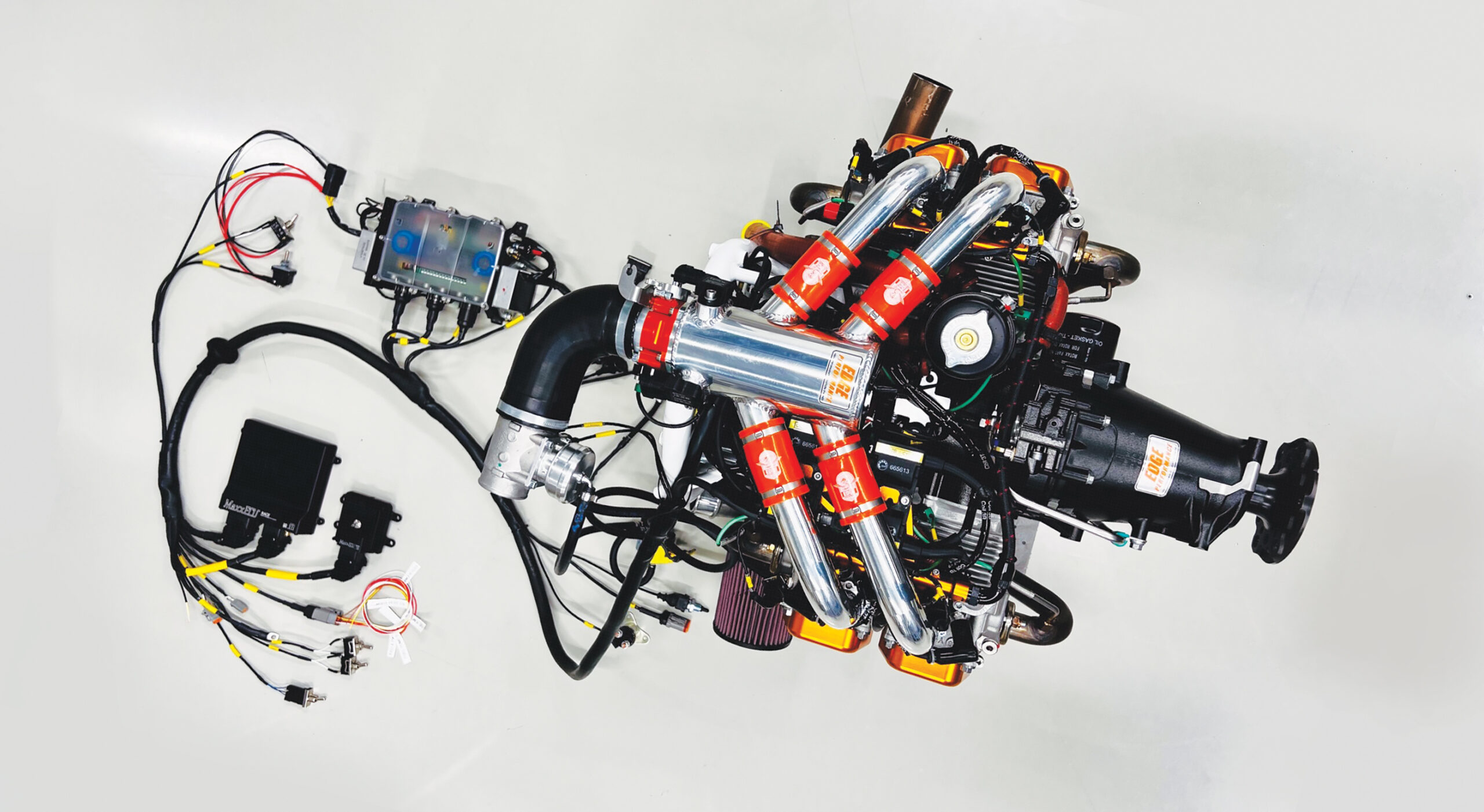
 Company owner Mark Schaible joins us to talk about the airplane’s gestation and expectations for performance and when it might fly. Hint: You’ll be able to see a cabin mockup at AirVenture this year at the least. In general, Sonex is hoping for performance similar to the low-wing Sonex designs and will be building the first example as a taildragger with a 130-hp ULPower engine. Schaible also discusses changes to the design now that MOSAIC is closer to reality. Expanded Sport Pilot rules could allow Sonex to give the High Wing a gross weight above the current 1320-pound maximum for LSA.
Company owner Mark Schaible joins us to talk about the airplane’s gestation and expectations for performance and when it might fly. Hint: You’ll be able to see a cabin mockup at AirVenture this year at the least. In general, Sonex is hoping for performance similar to the low-wing Sonex designs and will be building the first example as a taildragger with a 130-hp ULPower engine. Schaible also discusses changes to the design now that MOSAIC is closer to reality. Expanded Sport Pilot rules could allow Sonex to give the High Wing a gross weight above the current 1320-pound maximum for LSA.


 My objective was to build an “
My objective was to build an “
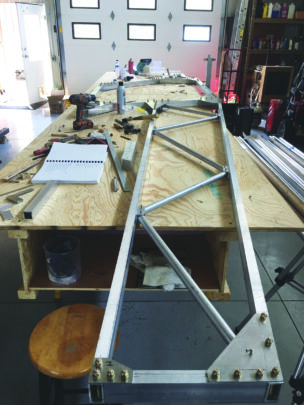

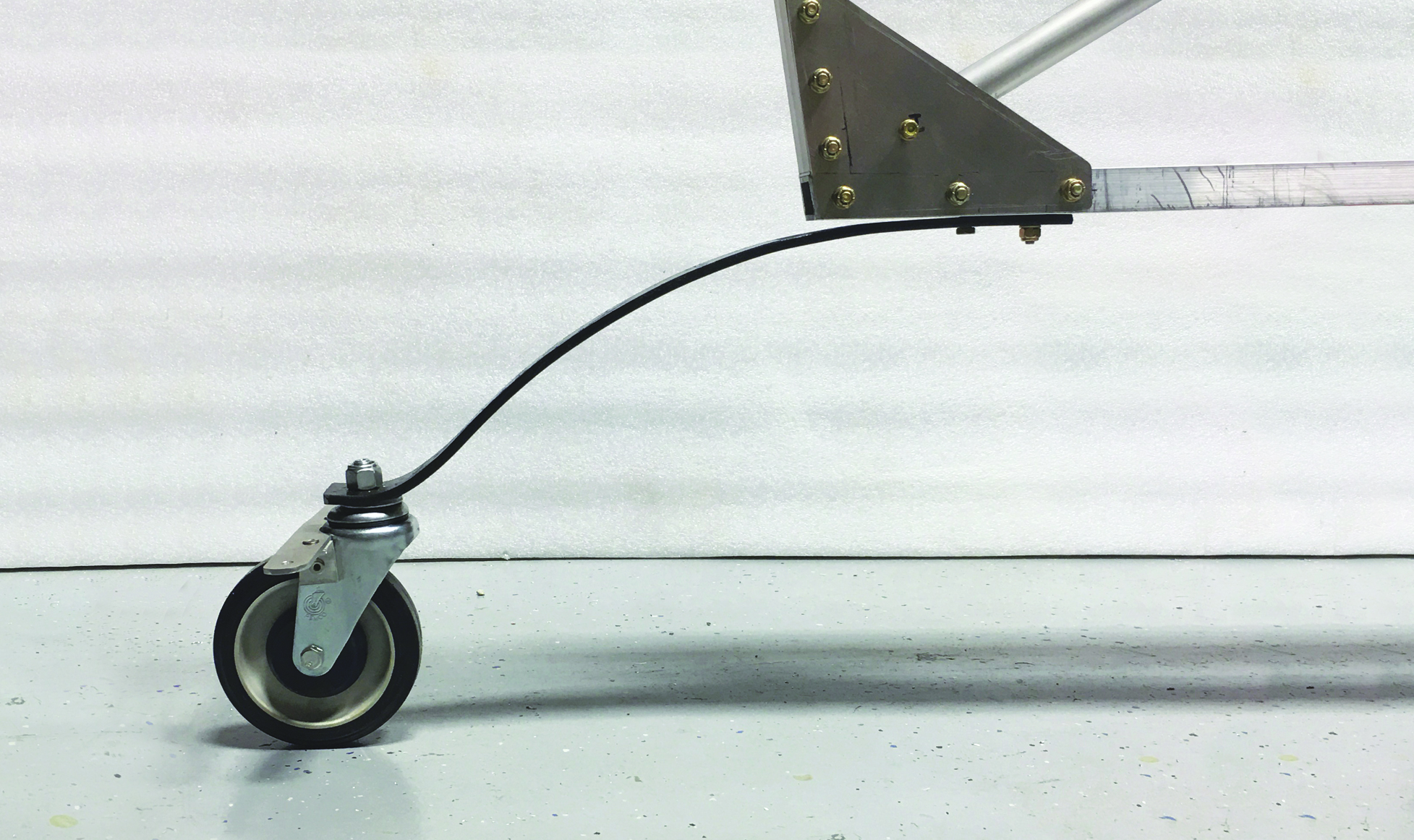
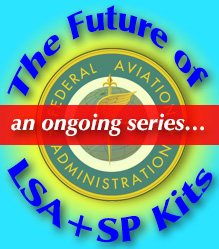 According to
According to 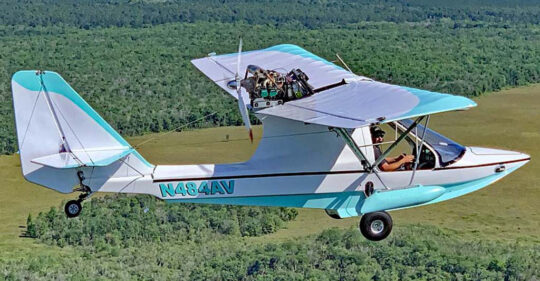 OK, let’s come back to Earth… or water perhaps …or either. Aero Adventure continues to fly as it has for three decades (though management has changed at least three times over the period). For a tiny fraction of $13.5 million, much less $170 million, Aero Adventure has built a line of aircraft, including kit versions and an SLSA version. They’ve also offered the
OK, let’s come back to Earth… or water perhaps …or either. Aero Adventure continues to fly as it has for three decades (though management has changed at least three times over the period). For a tiny fraction of $13.5 million, much less $170 million, Aero Adventure has built a line of aircraft, including kit versions and an SLSA version. They’ve also offered the 


 The U.S. operation of Aero Affinity ranges widely through the light aircraft space and has entered somewhat larger aviation, no doubt a good direction to be going as we contemplate Mosaic LSA that require new expertise for equipment like retractable gear, adjustable props, alternate propulsion systems, and more. Last year Alex took factory training by
The U.S. operation of Aero Affinity ranges widely through the light aircraft space and has entered somewhat larger aviation, no doubt a good direction to be going as we contemplate Mosaic LSA that require new expertise for equipment like retractable gear, adjustable props, alternate propulsion systems, and more. Last year Alex took factory training by  As to affordability
As to affordability To hold prices from soaring even higher, this move by Aero Adventure makes economic sense. I’d bet they can also add new sales from South America.
To hold prices from soaring even higher, this move by Aero Adventure makes economic sense. I’d bet they can also add new sales from South America.
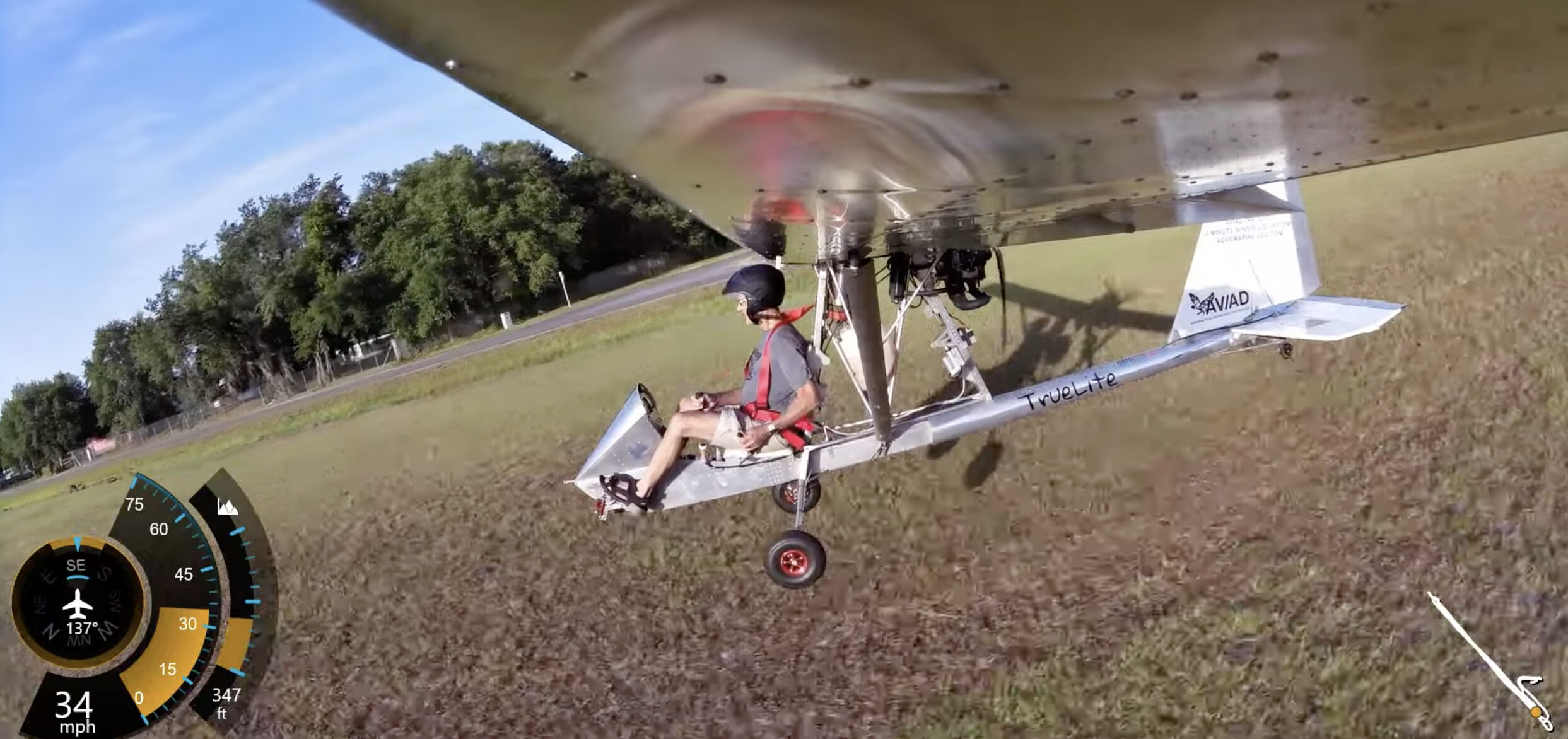








 In our exchange, Tai and I agreed that the idea of eVTOLs may be technically achievable now, at least to some range of operation, but public acceptance of this aircraft development may still take years.
In our exchange, Tai and I agreed that the idea of eVTOLs may be technically achievable now, at least to some range of operation, but public acceptance of this aircraft development may still take years.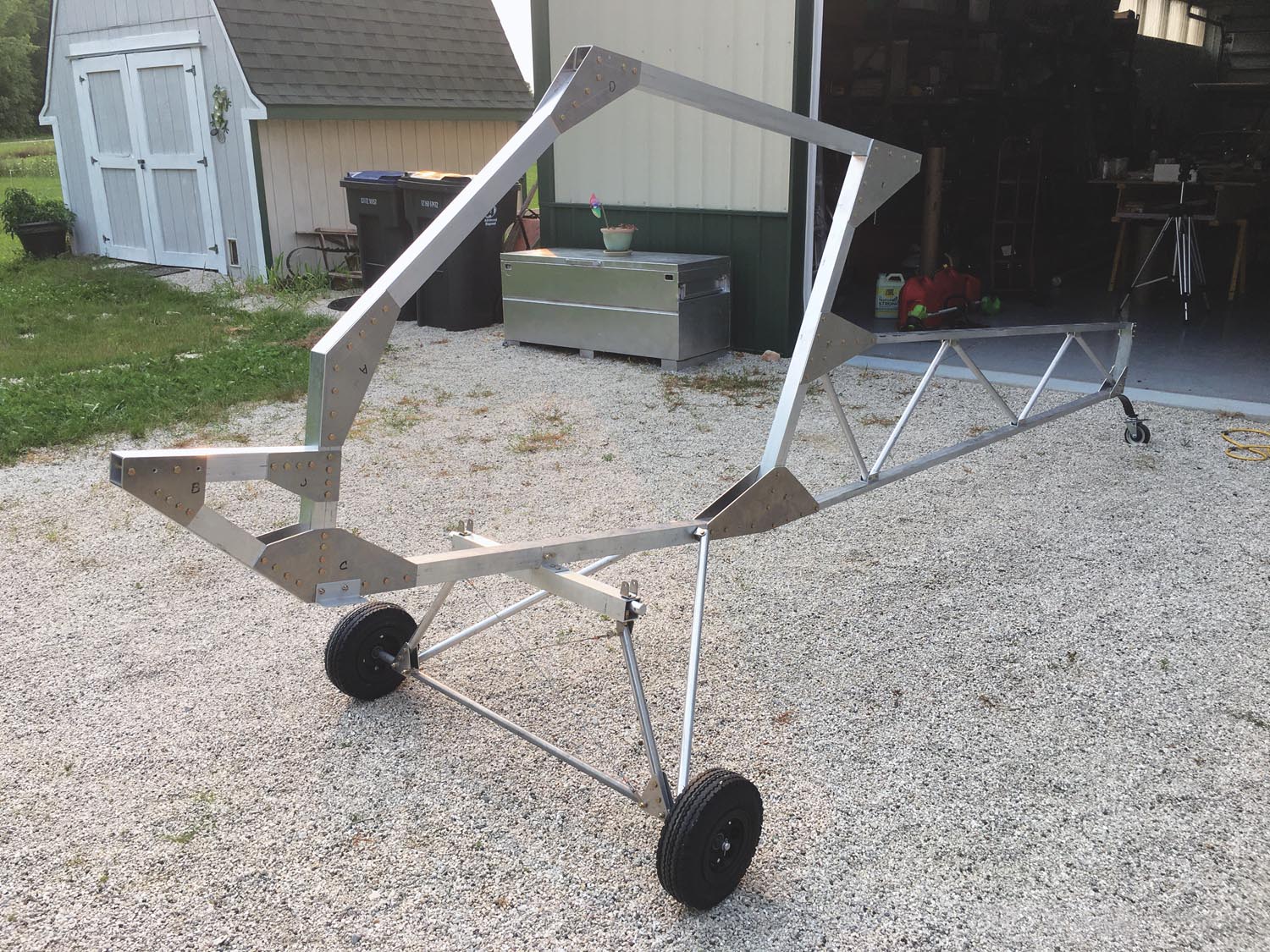





 Editor’s Note: This news release came across our (virtual) desks today and we feel it’s of interest to provide this update now. However, our man Dan Johnson has arranged to speak with current CEO Alex Rolinski in the next few days to get more detail on these changes and what to look for from Aero Adventure in the near future.
Editor’s Note: This news release came across our (virtual) desks today and we feel it’s of interest to provide this update now. However, our man Dan Johnson has arranged to speak with current CEO Alex Rolinski in the next few days to get more detail on these changes and what to look for from Aero Adventure in the near future.
 James came to aviation from the computer business, where the pace isn’t fast — it’s furious! Over the years Dave and I covered James and his output, we’d make a new video at every airshow, it seemed, as he had moved on from the last design to the next. That’s what they do in the world of computers but it made pilots’ heads spin.
James came to aviation from the computer business, where the pace isn’t fast — it’s furious! Over the years Dave and I covered James and his output, we’d make a new video at every airshow, it seemed, as he had moved on from the last design to the next. That’s what they do in the world of computers but it made pilots’ heads spin.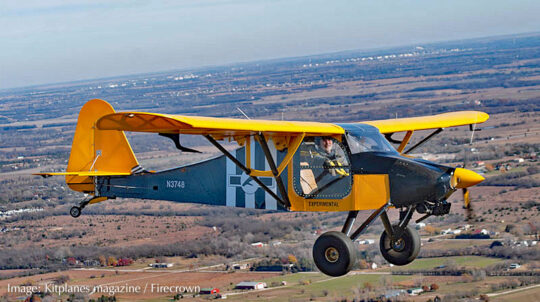 It also probably slowed sales because, as with computers, why buy this airplane when the next one will be even better?
It also probably slowed sales because, as with computers, why buy this airplane when the next one will be even better? James founded Belite and began with ideas about carbon fiber tube airframes. It was a marvelous, modern, even exotic idea but it was quite unorthodox for most builders. Plus, in those days, carbon fiber was expensive and a Part 103 aircraft needed to be affordable.
James founded Belite and began with ideas about carbon fiber tube airframes. It was a marvelous, modern, even exotic idea but it was quite unorthodox for most builders. Plus, in those days, carbon fiber was expensive and a Part 103 aircraft needed to be affordable. Even then, James kept making changes, ever improving the product like an engineer does. Images with this article reflect Chipper STOL, although Chipper 2 coming later this year will have all of James’ last refinements to the aircraft.
Even then, James kept making changes, ever improving the product like an engineer does. Images with this article reflect Chipper STOL, although Chipper 2 coming later this year will have all of James’ last refinements to the aircraft.

 The pair is at an early stage of the development in this project. SkyKicker’s website is in process. However, given a design that has already proven itself, and adding the high level of energy Nick and Charlotte are bringing to the task, I doubt it will be long before Chipper becomes a product on the market.
The pair is at an early stage of the development in this project. SkyKicker’s website is in process. However, given a design that has already proven itself, and adding the high level of energy Nick and Charlotte are bringing to the task, I doubt it will be long before Chipper becomes a product on the market. The episode discussed how an Alaska pilot had repaired his aircraft after a bear attacked it and clawed the fabric covering in several places (see simulated bear claw). The pilot made repairs with — you guessed it! — duct tape, and flew home successfully.
The episode discussed how an Alaska pilot had repaired his aircraft after a bear attacked it and clawed the fabric covering in several places (see simulated bear claw). The pilot made repairs with — you guessed it! — duct tape, and flew home successfully.

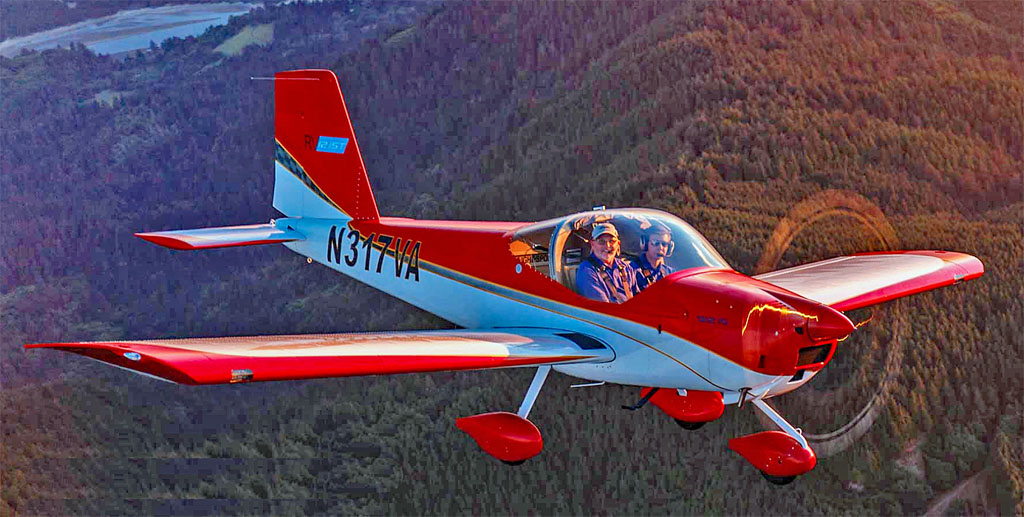
 When thinking of affordable aviation, it’s impossible not to talk about the
When thinking of affordable aviation, it’s impossible not to talk about the 


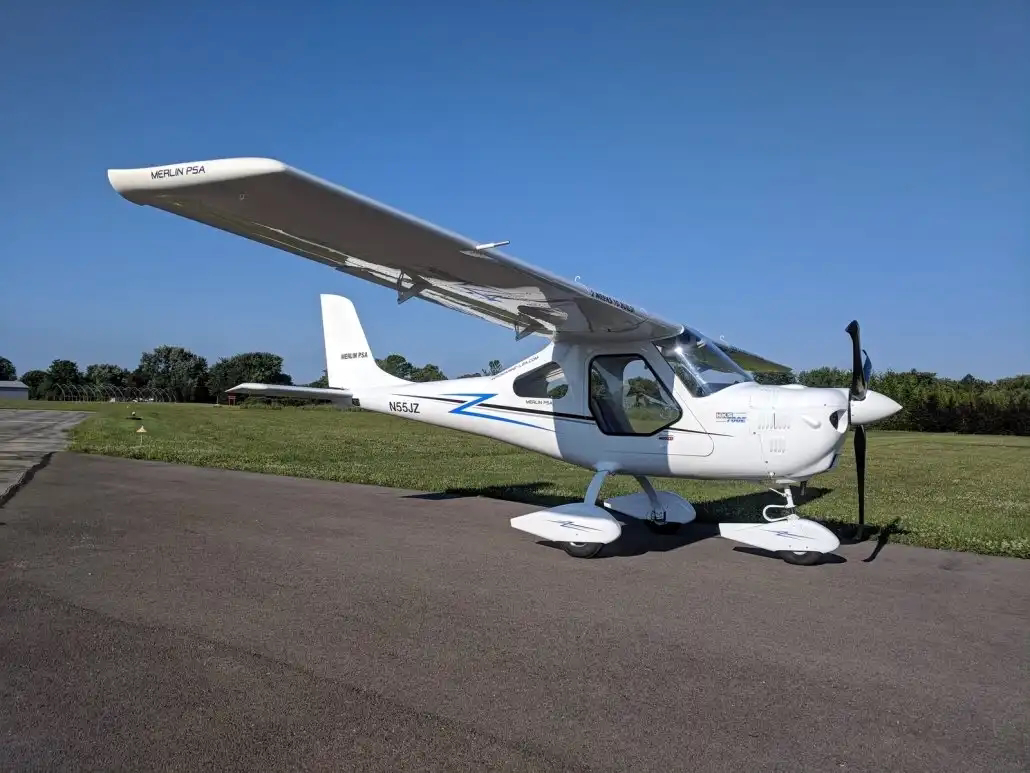
 LSA seaplanes constitute a highly fluid market yet we can see clues suggesting what might be ahead for some of the main brands. With summertime approaching, this State-of-the-Sector article attempts to keep up with the rapidly changing landscape (or waterscape).
LSA seaplanes constitute a highly fluid market yet we can see clues suggesting what might be ahead for some of the main brands. With summertime approaching, this State-of-the-Sector article attempts to keep up with the rapidly changing landscape (or waterscape). We’ll first look at two high-end entries that have been in the news and conclude with present LSA seaplanes and their status in the market.
We’ll first look at two high-end entries that have been in the news and conclude with present LSA seaplanes and their status in the market. Russ continued, “Founder Paul Vickers said the company is now raising capital to fund the push to begin deliveries on its backlog.”
Russ continued, “Founder Paul Vickers said the company is now raising capital to fund the push to begin deliveries on its backlog.”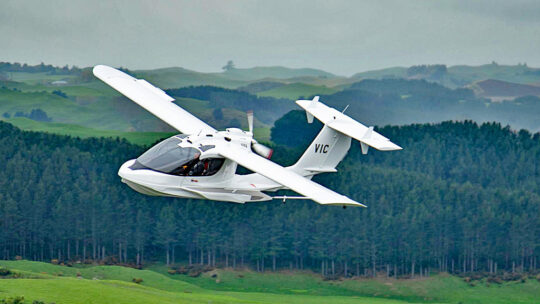 Wave has had a long development cycle but their timing with Mosaic approaching next year looks prescient.
Wave has had a long development cycle but their timing with Mosaic approaching next year looks prescient. However, Searey won
However, Searey won  According to a party I know to be reliable, new buyers are ready and have proposed to reacquire the onetime American company. Even original designer Kerry Ritcher is said to be part of the group interested in taking over from the Chinese. While plans remain uncertain, an American group could quickly breathe life back into a moribund brand. In recent years, the company’s appearance at airshows was modest and unenthusiastic. Over the last year, no one has answered the phones. Now the factory is shuttered.
According to a party I know to be reliable, new buyers are ready and have proposed to reacquire the onetime American company. Even original designer Kerry Ritcher is said to be part of the group interested in taking over from the Chinese. While plans remain uncertain, an American group could quickly breathe life back into a moribund brand. In recent years, the company’s appearance at airshows was modest and unenthusiastic. Over the last year, no one has answered the phones. Now the factory is shuttered. The lightest-of-SLSA-seaplanes
The lightest-of-SLSA-seaplanes  “The company owes several million dollars to creditors and customers,” a reliable source told me. “Employees have voiced concerns and some are taking action.” Seamax leaders have reportedly managed to keep their core team using “informal payments.”
“The company owes several million dollars to creditors and customers,” a reliable source told me. “Employees have voiced concerns and some are taking action.” Seamax leaders have reportedly managed to keep their core team using “informal payments.” While “buyer beware” is always good advice, one thing I’ve learned from decades of reporting on this particular sector of aviation: Never write off a worthy design as dead and gone. I’ve seen many popular aircraft such as Seamax return after internal reforms or under new leadership..
While “buyer beware” is always good advice, one thing I’ve learned from decades of reporting on this particular sector of aviation: Never write off a worthy design as dead and gone. I’ve seen many popular aircraft such as Seamax return after internal reforms or under new leadership.. Let’s do this up front: the price of a ready-to-ship kit is $59,900. It’s available today.
Let’s do this up front: the price of a ready-to-ship kit is $59,900. It’s available today. If you believe it’s worth a closer look,
If you believe it’s worth a closer look,  I have often written about many seaworthy aircraft and invite you to
I have often written about many seaworthy aircraft and invite you to 
 When we last wrote about the
When we last wrote about the  Not just any prop. This special “non-planar” three-blade prop designed by Craig Catto features an unusual bit of blade shape near the tips, all aimed at reducing noise while retaining or, even better, increasing efficiency. As tested on the Whisper Sling, the
Not just any prop. This special “non-planar” three-blade prop designed by Craig Catto features an unusual bit of blade shape near the tips, all aimed at reducing noise while retaining or, even better, increasing efficiency. As tested on the Whisper Sling, the 


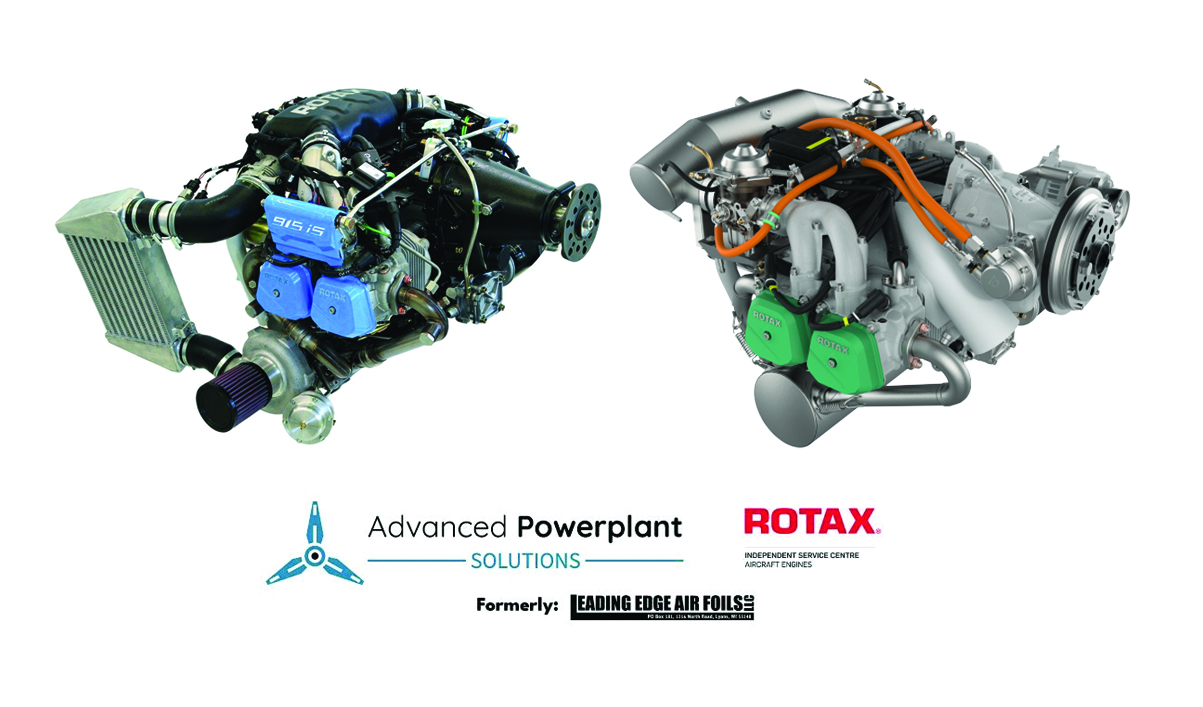


 Throughout the ’70s, hang glider designs accelerated smartly in glide performance and sink rate, stretching from slope-hugging 4:1 triangular-shaped wings to elegantly long and slender “bladewings” that could exceed a 20:1 glide yet remain foot-launchable and still be an aircraft you could carry on your shoulder (when folded down). Passionate enthusiasts thrilled to a 5X performance improvement in a decade or so.
Throughout the ’70s, hang glider designs accelerated smartly in glide performance and sink rate, stretching from slope-hugging 4:1 triangular-shaped wings to elegantly long and slender “bladewings” that could exceed a 20:1 glide yet remain foot-launchable and still be an aircraft you could carry on your shoulder (when folded down). Passionate enthusiasts thrilled to a 5X performance improvement in a decade or so. In the beginning, most pilots launched off mountains to get enough height to catch thermals. Yet lots of America doesn’t have mountainous terrain. Florida had plenty of pilots eager to fly hang gliders but to find the best soaring, they had to load up their gliders and drive 10-12 hours to the hills of Tennessee where flight park operators like me catered to them with mountain launch sites. At home they did boat towing regularly but that rarely got them high enough to catch thermals. One Florida man dreamed of a solution.
In the beginning, most pilots launched off mountains to get enough height to catch thermals. Yet lots of America doesn’t have mountainous terrain. Florida had plenty of pilots eager to fly hang gliders but to find the best soaring, they had to load up their gliders and drive 10-12 hours to the hills of Tennessee where flight park operators like me catered to them with mountain launch sites. At home they did boat towing regularly but that rarely got them high enough to catch thermals. One Florida man dreamed of a solution.


 This central-northwestern area is home to fancy equestrian ranches and the spacious airport has begun to thrive from light aircraft operations. Airport manager Mike Grawe supported by industry expert Roy Beisswenger and airfield entrepreneur Troy Townsend welcomed Randy Dorsey along with another business setting up to build the former Belite Chipper 2, the latter operated by husband-and-wife team Nick and Charlotte Jones. Along with two powered parachute operations and 40 brand-new T-hangars (sorry, already fully booked), X35 looks alive and thriving.
This central-northwestern area is home to fancy equestrian ranches and the spacious airport has begun to thrive from light aircraft operations. Airport manager Mike Grawe supported by industry expert Roy Beisswenger and airfield entrepreneur Troy Townsend welcomed Randy Dorsey along with another business setting up to build the former Belite Chipper 2, the latter operated by husband-and-wife team Nick and Charlotte Jones. Along with two powered parachute operations and 40 brand-new T-hangars (sorry, already fully booked), X35 looks alive and thriving.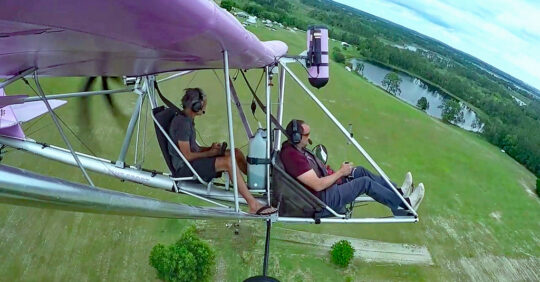 Is It Affordable?
Is It Affordable? A man of highly innovative design but very few words, many knew Bobby for years yet learned little about him. He was rarely one to talk about himself in public settings. I always figured that much of the time he was designing the next aircraft in his mind.
A man of highly innovative design but very few words, many knew Bobby for years yet learned little about him. He was rarely one to talk about himself in public settings. I always figured that much of the time he was designing the next aircraft in his mind.


 There’s little question
There’s little question 
